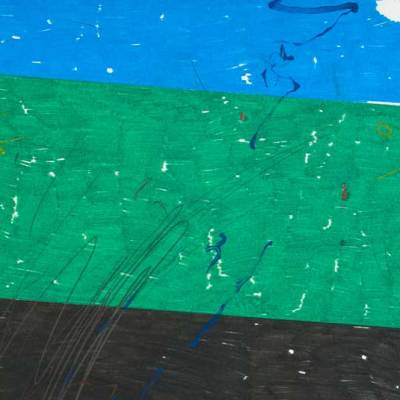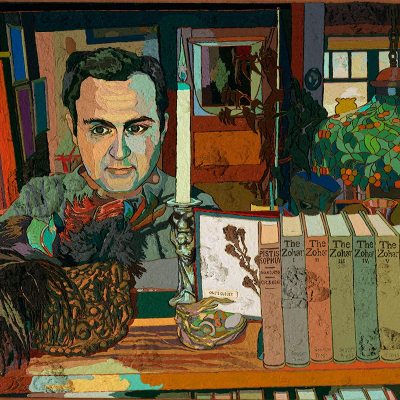At first glance Aaron Curry’s large-scale sculptures don’t make a case for paint as versatile, modern and fun. But upon closer inspection, each piece in his sculpture rich show ‘Bad Brain’(exhibiting at Bordeaux’s contemporary art museum CAPC) is a tribute to paint, and its potential to accelerate the work of young modern artists. Whether it’s through intricate brushstrokes or testillation – applied using a graphite pencil and acrylic – ‘Bad Brain’ is a love song to brush and oils.
‘Pretty much everything is painted’, the artist says, ‘from the actual paintings to the sculptures. I’ve always been really interested in paint – both on a canvas and on objects’. Without any reference to the medium’s historical heritage such as Impressionism and mid-century paintwork by the likes of Mark Rothko, Curry is far from picturesque with paint – fusing rare fluro colours with pastels, found objects and digital motifs. His commitment to the genre is multidisciplinary – he attempts to reshape the medium and offer it up as a fresh option for contemporary artists. ‘I know that paint isn’t particularly cool anymore’ he says, ‘and I actually used to hide my paintings away in my studio when I had visitors’.
Untitled 2014 exemplifies Curry’s commitment to diversifying paint – a large sculpture with paintwork that, from afar, looks like a digitalised image. In this piece paint is an enigma, we’re never too sure that we can trust what we see. Much of the time Curry uses the iPad app Sensu to draw, he then recreates these pixelated images by hand.If Curry’s work tries hard to impress with its diversity, the depth in his references more than make up for it. Themes such as the dead human form stem from the artist’s wife being diagnosed with an illness, and are particularly thought provoking.
Like Curry, the work of Andrew Brischler is characterised by an interest in process. He describes pencil as his chosen tool and his drawings on canvas are often months in the making. His sole use of coloured pencil sets Brischler apart in a landscape of young artists working with installations and large scale pieces – ‘in the past year or so, I’ve shifted to a practice devoted almost entirely to drawing. There’s no cutting corners’ he says. Like Curry, Brischler remains skeptical of digital technology in art – ‘I’m invested in the craft of hand-making a drawing. I don’t want to be a 27 year old commenting on the role of labour in a digital age, I’m always by my iPhone and iPad, but I have always been interested by the imperfection in art that’s essentially very human.’
Brischler began his career working with oils, and only in the last couple of years has he moved to pencil. It’s the possibility of failure that draws him to this medium – ‘when I see the puckered corners of a giant Warhol or the tremulous lines of an Agnes Martin painting, I’m connected to that image more so than the sterile, seductive finish of a Donald Judd.’
The process-driven work of Curry and Brischler could be interpreted as a reaction to the buzzwords that surround young contemporary artists today. Terms such as ‘post-internet’ and ‘YouTube artist’ are frustratingly zeitgeist, and many artists resent these labels. Through their modern take on the historic tools of the artist’s trade, Brischler and Curry prove that trial and error is seriously cool.
‘Bad Brain by Aaron Curry’ is on at CAPC Bordeaux until 23 September.
Andrew Brischler is exhibiting at the Arts Club London until 27 September.





